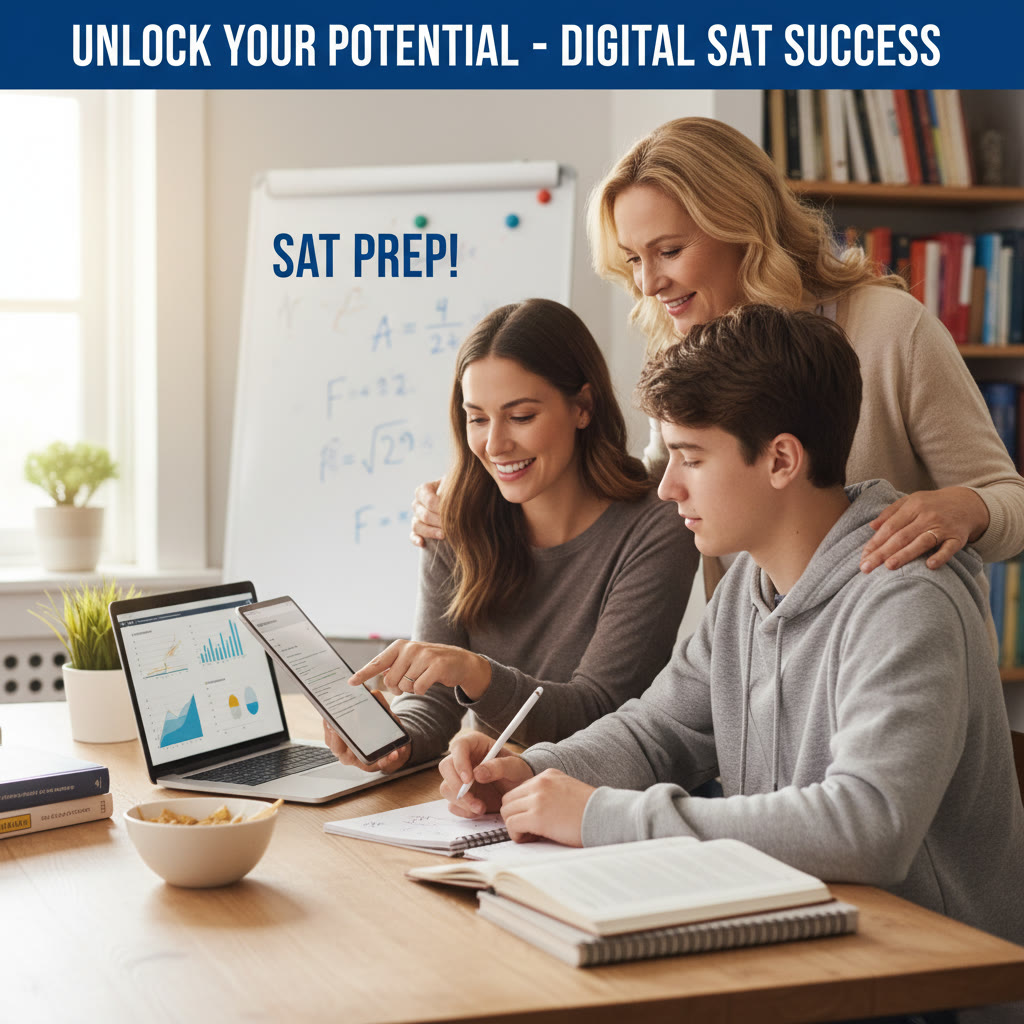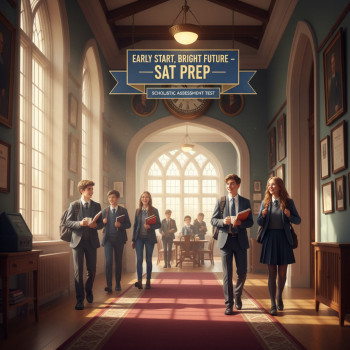Why this guide matters: your SAT and the Ivy League landscape
If you’re a student dreaming about the Ivy League—or a parent helping that student navigate the process—this guide is for you. The Ivy League schools are famously selective, and while admission decisions are holistic, SAT scores still play a meaningful role: they can open doors to interviews, strengthen scholarship cases, or act as a tie-breaker when everything else on an application looks exceptional. The SAT has moved into a digital era, and that changes timing, strategy, and preparation. Read on for a calm, honest walkthrough of what the Ivies look for, how to set target scores, how to submit and interpret scores, and specific, practical ways to prepare (including when to consider one-on-one help like Sparkl’s personalized tutoring).

Quick reality check: test policies and why they change
Over the past few years, many colleges—including selective ones—revisited test policies. Some became test-optional, some temporarily suspended testing, and a few later reinstated their traditional testing expectations. Policies continue to evolve, so it’s important to check each college’s official admissions page for the most current stance. That said, many Ivy League schools value standardized test scores when submitted and may use them for scholarship, placement, or course advising—even when applications are reviewed holistically.
Practical takeaway: assume that an SAT (or a strong alternative testing profile) can only help—never hurt—your application, unless a college explicitly instructs otherwise for the application cycle you are applying in.
What the Ivy League looks for in SAT scores
Admissions teams consider SAT scores in context: your high school curriculum, class rank (if available), recommendations, essays, extracurriculars, and life experiences. But because the Ivy League applicant pool often has similarly stellar GPAs, SAT scores become one of the clearer, comparable metrics.
How admissions officers use scores
- Baseline academic indicator: a standard measure across different schools and curricula.
- Consistency check: do scores align with grades and coursework rigor?
- Supplement for nontraditional applicants: helps when school profiles or curricula are unique.
- Scholarship and honors consideration: quantitative threshold sometimes used for merit awards or placement.
Target SAT scores for competitive Ivy League applicants
Rather than one magic number, think in ranges. Most admitted students to Ivy League colleges post high SAT scores, but there’s variation across schools and classes. The digital SAT scoring scale is comparable to prior versions in terms of interpretation and college use—aim for scores that place you near the top of admitted student ranges at your target schools.
| What to aim for | Competitive range (composite) | Why this range matters |
|---|---|---|
| Very competitive for Ivies | 1500–1600 | Places you in the top tier among applicants; strengthens overall academic snapshot. |
| Solidly competitive | 1450–1499 | Still competitive—especially with exceptional coursework and extracurriculars. |
| Potentially competitive | 1400–1449 | Good baseline; may require strong supplemental materials to stand out. |
| Consider retakes or alternatives | <1400 | Not disqualifying, but may need stronger essays, ECs, or subject tests (if offered) to balance. |
Note: A composite score is only part of the story. Section balance—evidence-based reading and writing versus math—can matter depending on your intended major. For example, prospective STEM majors should emphasize strong math results.
Digital SAT specifics: what’s new and what to prepare for
The SAT’s digital transition changes format, timing, and test-taking logistics. The Digital SAT is adaptive across test modules, shorter in total testing time, and delivered on approved secure devices. Familiarity with the interface reduces test-day anxiety and can improve efficiency.
Key practical differences
- Adaptive format: performance on the first module influences question difficulty in later modules; early focus matters.
- Shorter sections: pacing strategies must be adjusted; fewer questions can mean each one has more weight.
- Built-in tools: calculators are allowed for the math portion; digital tools like answer flags or review features require practice to use effectively.
Practice with real digital practice tests (official practice is best) and replicate test-day conditions—device, timing, and breaks. Knowing the interface is almost as important as knowing math formulas or reading strategies.
Strategic timeline: when to take the Digital SAT
Planning gives you options. A common approach is to take a diagnostic early (sophomore year or start of junior year), then a full, official Digital SAT in the spring of junior year and again in the fall of senior year if needed.
- Diagnostic practice: senior fall of sophomore year or early junior year—low stakes, high information value.
- First official test: spring of junior year—allows time for targeted improvement.
- Final official test: early fall of senior year—last chance to raise scores before most application deadlines.
Each student’s timeline will differ depending on school schedule, extracurricular demands, and anticipated application cycle. If you’re applying early decision/early action, aim to have a competitive score earlier (by late junior year).
How many times should you take the SAT?
Quality over quantity. Two solid, well-prepared attempts are better than multiple unfocused repeats. Admissions teams can see multiple scores, and some schools superscore—combining the best section scores across test dates. Superscoring policies vary by college, so confirm how each Ivy treats multiple test scores and tailor your plan accordingly.
Score reporting strategies: single score, superscore, or optional?
There are three common approaches students take when reporting their SAT results to selective colleges:
- Send only the best single test (if you want a clean presentation).
- Send multiple dates and allow the college to superscore (if the college superscores, this can raise your composite).
- Use Score Choice (where available) to send only specific test dates—but be careful: some institutions require all scores.
Best practice: check each Ivy’s official admissions policy for how they prefer or require scores. If a college superscores and your section highs are on different dates, sending multiple dates can benefit you; if a college asks for all scores, withhold none. Transparency is usually safe.
Beyond the number: how to present your testing story
Your SAT score does not exist in isolation. Help admissions officers understand the context behind the number:
- Trend and improvement: show steady growth across years or test dates.
- Academic challenge: highlight AP, IB, or honors coursework and how you performed in those classes.
- Non-academic circumstances: if life events affected school or study time, consider explaining them briefly in your application as appropriate.
Practical prep: study smart, not just hard
Aim for targeted, efficient practice. The highest scorers aren’t just those who grind hours—they practice in a focused, data-driven way. Here’s how to do that:
Step-by-step prep plan
- Start with a full diagnostic Digital SAT under timed conditions.
- Analyze your diagnostic: which question types or content areas are costing you time or points?
- Create a focused study plan: set weekly goals and practice specific question types rather than random practice.
- Incorporate official practice materials: nothing beats working with real-style Digital SAT questions.
- Do regular timed sections to build pacing and comfort with the digital tools.
- Simulate test day: do at least two full, timed practice tests before your official test date.
Small, frequent practice sessions with a clear goal often beat one long marathon session. Also, use missed-question review time to learn patterns—did you guess wrong, run out of time, or get conceptually stuck?
When to consider tutoring or a personalized plan
Every student benefits from targeted feedback, but personalized tutoring becomes especially valuable when:
- You’ve plateaued despite self-study.
- Your diagnostic shows a mix of content gaps and strategy gaps.
- You need structure within a busy schedule.
- You want tailored pacing strategies for the Digital SAT interface.
Personalized 1-on-1 tutoring can accelerate progress because tutors tailor lessons to your exact weaknesses, keep you accountable, and give actionable practice strategies. For families considering tutoring, Sparkl’s personalized tutoring offers one-on-one guidance, tailored study plans, expert tutors, and AI-driven insights that help identify the high-impact areas to focus on—so every hour of studying moves the needle.
How much improvement is realistic with focused work?
Improvement depends on starting point, study quality, and time invested. Typical realistic gains with structured preparation range from 30–150+ points, depending on those variables. If your baseline is already high (e.g., 1450+), bigger jumps require sharpened strategy and high-quality, focused practice rather than just more hours.
What to do if you’re weaker in one section
Balance matters. If you’re a strong reader but weaker in math, prioritize math recovery—concept review, targeted problem sets, and timed practice. Conversely, if reading/writing is weaker, develop active reading habits, learn question-type strategies, and strengthen grammar mechanics for the digital interface.
Mini action plan for section weakness
- Diagnose exactly which question types you miss.
- Replace passive review with active drills focused on those types.
- Use mixed-timing drills to rebuild stamina and accuracy under pressure.
- After each practice set, log errors and revisit them in spaced intervals.
Application timing, Early Decision, and how SAT fits
If you’re applying Early Decision (ED) or Early Action (EA), you’ll want a competitive SAT score earlier—typically by late junior year or early senior fall. ED applicants often send applications in November, so plan test dates and retakes accordingly. Regular Decision applicants have more flexibility but should still aim to finish testing in early fall of senior year.
How Ivy admissions evaluate SAT in a holistic review
Holistic review means no single element (including SAT) decides your fate. Admissions officers look for academic preparation, intellectual curiosity, leadership, impact in activities, and personal character. A top SAT score can amplify academic readiness, but essays, recommendations, and meaningful extracurriculars complete the picture.
Table: Checklist before submitting your application
| Task | Why it matters | When to finish |
|---|---|---|
| Confirm each Ivy’s test policy | Schools update policies; know whether they require all scores or allow Score Choice. | At least one month before application submission |
| Take at least one full Digital SAT practice test | Build familiarity with format, timing, and digital tools. | Early in your prep timeline (diagnostic) |
| Complete 2–3 official/timed practice tests | Simulate test day and confirm pacing and stamina. | Within two months before official test |
| Decide on score reporting approach | Choose whether to send multiple dates, single score, or use Score Choice. | Before sending scores to colleges |
| Consider tutoring if progress stalls | Personalized plans accelerate gains and increase efficiency. | Any time after diagnostic if gains plateau |
Test day and digital logistics
Digital SAT day logistics differ from paper-based testing. Know device rules, allowed calculators, identification requirements, and backup plans. Practice on similar devices and check with your school or testing center about what devices are permitted and how battery/charging needs are handled. Being ready technically removes a major source of stress.
Financial considerations: fee waivers and test resources
Standardized testing should be accessible. Fee waivers and free official practice resources exist—use them. College Board and other official resources provide free practice and sometimes fee support for students who qualify. If personalized tutoring is beyond your initial budget, consider blended solutions: a few 1-on-1 sessions to create a plan (for example, with Sparkl’s targeted tutoring), then steady self-study using free official resources and timed practice tests.
Real-world examples: how students used SAT scores to strengthen their Ivy applications
Consider two hypothetical students:
- Student A started with a 1350 diagnostic, focused on math fundamentals, practiced weekly under timed conditions, and used targeted tutoring to break a plateau. After six months, they reached 1485 and secured admission because the upward trend matched a rigorous transcript and strong research experience.
- Student B scored 1520 on a first serious test but lacked strong subject balance for their STEM interests. They targeted a math section boost, focused on ED application timing, and showcased research experience in their application—helping convert a high score into a complete, compelling profile.
Both stories show that the SAT is a piece of a larger story—used effectively, it can amplify your strengths.
How Sparkl’s personalized tutoring can fit into your plan
If you’re wondering where to invest time and resources, personalized tutoring is worth considering when you want accelerated improvement, a custom study roadmap, and someone to interpret your practice data. Sparkl’s 1-on-1 guidance and tailored study plans focus on your real weak spots, and their use of AI-driven insights can spotlight high-impact practice items so you study smarter. Students often use tutoring for a short intensive period before an official test, or intermittently over a year to track steady improvement.
Final practical checklist: put it all together
- Check each Ivy’s current test policy on their admissions page.
- Take an early diagnostic and set a realistic score goal based on target school ranges.
- Create a study plan that includes official Digital SAT practice, timed sections, and regular review.
- Consider 1-on-1 tutoring if you need a targeted boost or time-efficient strategy—use it to maximize return on study hours.
- Plan tests around application timelines—ED/EA applicants should finish testing earlier.
- When in doubt, prepare to present your best evidence of academic readiness: strong scores, rigorous coursework, and compelling supplemental materials.

Parting thoughts: the SAT is a tool, not your identity
It’s easy to let a test define the narrative, but admissions officers are looking for people who will enrich their campus communities—students who show curiosity, resilience, and impact. A strong SAT score helps demonstrate academic readiness, but your essays, recommendations, and the tangible impact you’ve made in your activities tell the fuller story.
Use the SAT strategically: plan early, practice with purpose, and consider targeted, personalized help when you need it. Whether you pursue some 1-on-1 coaching, a short burst of intensive tutoring, or a self-guided regimen, do so in a way that preserves balance and keeps your college application authentic. If you choose a tutoring partner, prioritize tutors who create tailored plans, measure progress, and help you apply test skills to real academic work—Sparkl’s model, for instance, offers that personalized, data-informed approach many students find effective.
Questions to ask your tutor or test coach
- How will you tailor the plan to my diagnostic weaknesses?
- Can you show measurable progress checkpoints we’ll use to judge success?
- How will studying for the Digital SAT differ from older formats in our sessions?
- What’s a realistic score gain based on my baseline and time available?
Admissions is a marathon, not a sprint. The Digital SAT is only one lap—but it’s an important one. Treat it with respect, practice with strategy, and build a rounded application that shows both excellence and heart. Good luck—your hard work and clarity of purpose will carry you far.



















No Comments
Leave a comment Cancel